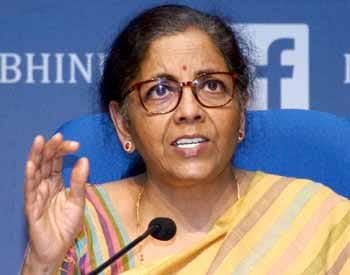India’s economic trajectory continues to demonstrate resilience, even in the face of erratic monsoon patterns. The Finance Ministry’s recent Economic Review for July 2024 underscores that the nation’s GDP growth rate remains firmly on track, estimated between 6.5% to 7.0% for the fiscal year 2024-25. This optimism stems from robust economic activity witnessed during the first four months of the fiscal year.
Rising GST Collections Reflect Expanding Economic Activity
A notable highlight of the report is the significant surge in GST collections from April to July 2024. This increase is attributed to an expanding tax base coupled with heightened economic activities across the nation. Such a rise in GST collections serves as a clear indicator of the ongoing economic momentum, supporting the projected GDP growth rate.
Manufacturing Sector: A Pillar of Economic Strength
The manufacturing sector has emerged as a key driver of economic growth. The Purchasing Managers’ Index (PMI) for both manufacturing and services reflects strong domestic activity. Several factors contribute to this sector’s robust performance, including increased demand, a rise in new export orders, and higher production prices. These elements collectively paint a positive picture of the manufacturing sector’s contribution to the overall economy.
Fiscal Consolidation on the Horizon
On the fiscal front, the 2024-25 budget has laid a solid foundation for fiscal consolidation. The Finance Ministry’s report projects a reduction in the fiscal deficit, bolstered by strong revenue collection, disciplined revenue expenditure, and overall strong economic performance. This fiscal prudence is crucial as India aims to balance economic growth with sustainable fiscal policies.
Capital Expenditure: Fueling Private Investment Cycles
The report highlights that capital expenditure has been sustained at high levels, a strategy that is pivotal in kickstarting new private investment cycles. This focus on capital expenditure not only drives immediate economic activity but also sets the stage for long-term growth by enhancing infrastructure and industrial capacity.
Agriculture Sector: Kharif Sowing Supported by Monsoon Stability
Despite initial concerns about the monsoon, stable progress in the southwest monsoon has been a boon for Kharif sowing. The replenishment of water levels in reservoirs is a positive sign for the production of both the current Kharif and upcoming Rabi crops. This agricultural stability is expected to contribute to reducing food inflation in the coming months.
Inflation: A Declining Trend
The report also sheds light on inflation trends, noting that retail inflation dropped to 3.5% in July 2024, marking the lowest rate since September 2019. This decline is largely due to the easing of food inflation, a direct result of stable agricultural production and improved supply chains.
Bank Credit and Indirect Taxes: Indicators of Economic Health
Another key insight from the report is the steady growth in bank credit alongside a rise in indirect tax collections. These indicators not only reflect the growing economic activity but also point to a healthy transactional environment within the country. As bank credit expands, businesses are likely to have better access to the funds needed for growth and expansion.
Export Growth: A Bright Spot in India’s Economic Landscape
Exports, both of goods and services, have shown significant improvement compared to the previous year. This surge in exports is a testament to India’s growing competitiveness on the global stage, driven by both increased demand for Indian products and services and strategic governmental policies aimed at boosting export-oriented sectors.
Stock Markets and Foreign Direct Investment: Steady and Growing
India’s stock markets have maintained their levels, reflecting investor confidence in the economy’s prospects. Moreover, foreign direct investment (FDI) inflows have seen a notable increase, driven by gross inflows into the country. This rise in FDI is a strong endorsement of India’s economic stability and growth potential.
Conclusion: A Resilient Economy with Promising Prospects
In summary, the Finance Ministry’s report paints an encouraging picture of India’s economy. Despite the challenges posed by an erratic monsoon, the economic momentum remains intact, with key sectors such as manufacturing, agriculture, and services driving growth. With inflation on a downward trajectory and fiscal consolidation on the horizon, India’s economic future appears bright. The sustained growth in bank credit, indirect taxes, and FDI further underscores the resilience and potential of the Indian economy as it continues to navigate both domestic and global challenges.













